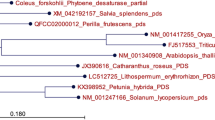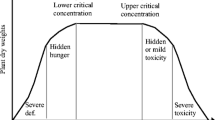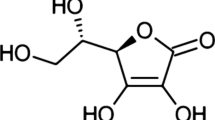Abstract
Cassava is the major root crop for a quarter billion subsistence farmers in sub-Saharan Africa. It is valued for its ability to grow in adverse environments and the food security it provides. Cassava contains potentially toxic levels of cyanogenic glycosides (linamarin) which protect the plant from herbivory and theft. The cyanogens, including linamarin and its deglycosylated product, acetone cyanohydrin, can be efficiently removed from the root by various processing procedures. Short-cuts in processing, which may occur during famines, can result in only partial removal of cyanogens. Residual cyanogens in cassava foods may cause neurological disorders or paralysis, particularly in nutritionally compromised individuals. To address this problem and to further understand the function of cyanogenic glycosides in cassava, we have generated transgenic cassava in which cyanogenic glycoside synthesis has been selectively inhibited in leaves and roots by antisense expression of CYP79D1/D2 gene fragments. The CYP79D1/D2 genes encode two highly similar cytochrome P450s that catalyze the first-dedicated step in cyanogenic glycoside synthesis. Transgenic plants in which the expression of these genes was selectively inhibited in leaves had substantially reduced (60– 94% reduction) linamarin leaf levels. Surprisingly, these plants also had a greater than a 99% reduction in root linamarin content. In contrast, transgenic plants in which the CYP79D1/D2 transcripts were reduced to non-detectable levels in roots had normal root linamarin levels. These results demonstrate that linamarin synthesized in leaves is transported to the roots and accounts for nearly all of the root linamarin content. Importantly, transgenic plants having reduced leaf and root linamarin content were unable to grow in the absence of reduced nitrogen (NH3) . Cassava roots have previously been demonstrated to have an active cyanide assimilation pathway leading to the synthesis of amino acids. We propose that cyanide derived from linamarin is a major source of reduced nitrogen for cassava root protein synthesis. Disruption of linamarin transport from leaves in CYP79D1/D2 anti-sense plants prevents the growth of cassava roots in the absence of an alternate source of reduced nitrogen. An alternative strategy for reducing cyanogen toxicity in cassava foods is to accelerate cyanogenesis and cyanide volatilization during food processing. To achieve this objective, we have expressed the leaf-specific enzyme hydroxynitrile lyase (HNL) in roots. HNL catalyzes the breakdown of acetone cyanohydrin to cyanide. Expression of HNL in roots accelerated cyanogenesis by more than three-fold substantially reducing the accumulation of acetone cyanohydrin during processing relative to wild-type roots.
Similar content being viewed by others
References
A. Akintonwa O. Tunwashe (1992) ArticleTitleFatal cyanide poisoning from cassava-based meal Human Exp. Toxic. 11 47–49
M. Andersen P. Bush I. Svendsen B. Moller (2000) ArticleTitleCytochromes P450 from cassava catalyzing the first steps in the biosynthesis of the cyanogenic glycosides linamarin and lotaustralin J. Biol. Chem. 275 1966–1975 Occurrence Handle10.1074/jbc.275.3.1966 Occurrence Handle10636899
S. Bak C.E. Olsen B.A. Halkier B.L. Moller (2002) ArticleTitleTransgenic tobacco and Arabidopsis plants expressing the two multifunctional sorghum cytochrome P450 enzymes, CYP79A1 and CYP71E1, are cyanogenic and accumulate metabolites derived from intermediates in Dhurrin biosynthesis Plant Physiol. 123 1437–1448 Occurrence Handle10.1104/pp.123.4.1437
C. Balagopalan,G.Padmaja,S.Nanda,S.Morthy1988Cassava nutrition and toxicityIn: Cassava in FoodFeed and Industry. CRC Press, Boca Raton, Florida
M.Bediako, B.Tapper,G.Pritchard 1981Metabolism synthetic site and translocation of cyanogenic glucoside in cassavaIn: E. Terry (Ed.) Proceedings of the first triennial root crops symposium of the International society for tropical root crops IDRC Canada, pp. 143–148
A.Bellotti,B.Arias,1993The possible role of HCN on the biology and feeding behavior of the cassava burrowing bug (Cyrtomenus bergi Froeschner)In: W.M. Roca and A.M. Thro (Eds.) Proceedings of the first international scientific meeting of the Cassava Biotechnology Network25–28 August 1992. Cali, Colombia: pp 406–409, Centro Internacional de Agricultura Tropical
A. Bellotti L. Riss (1994) ArticleTitleCassava cyanogenic potential and resistance to pests and diseases Acta Hort. 375 141–151
R. Best T. Hargrove (1994) Cassava: the latest facts about an ancient crop CIAT Publication Cali, Colombia
M. Bokanga (1994) ArticleTitleProcessing of cassava leaves for human consumption Acta Hort. 375 203–207
J. Brusslan E. Tobin (1992) ArticleTitleLight-independent developmental regulation of cab gene expression in Arabidopsis thaliana seedlings Proc. Natl. Acad. Sci. USA 89 7791–7795 Occurrence Handle1380166
D. Byrne (1984) ArticleTitleBreeding cassava Plant Breeding Rev. 2 73–134
P.A. Calatayud B. Le Ru (1996) ArticleTitleStudy of the nutritional relationships between cassava and mealybug and its host plant Bull Soc. Zool. Fr. Evol. Zool. 121 391–398
Cliff, J., Lundquist, P., Mårtenssen, J., Rosling H. and Sörbo, B. 1985. Association of high cyanide and low sulphur intake in cassava-induced spastic paraperesis. Lancet ii: 1211–1213.
J. Cock (1985) Cassava: New potential for a neglected crop Westfield Press London
E. Conn (1979) ArticleTitleCyanogenic glycosides Int. Rev. Biochem. 27 21–43
E. Conn (1994) ArticleTitleCyanogenesis–a personal perspective Acta Hort. 375 31–43
F. Delange L. Ekpechi H. Rosling (1994) ArticleTitleCassava cyanogenesis and iodine deficiency disorder Acta Hort. 375 289–293
A. Dixon R. Asiedu M. Bokanga (1994) ArticleTitleBreeding of cassava for low cyanogenic potential: problems, progress and prospects Acta Hort. 375 153–161
L. Du M. Bokanga B. Moller B. Halkier (1995) ArticleTitleThe biosynthesis of cyanogenic glucosides in roots of cassava Phytochem. 39 323–326
M. Elias P. Sudhakaran B. Nambisan (1997a) ArticleTitlePurification and characterization of - cyanoalanine synthase from cassava tissues Phytochem. 46 469–472
M. Elias B. Nambisan P. Sudhakaran (1997b) ArticleTitleCatabolism of linamarin in cassava Plant Sci. 126 155–162
M. Ernesto A. Cardoso D. Nicala E. Mirione F. Massaza J. Cliff M. Haque J. Bradbury (2002) ArticleTitlePersistent konzo and cyanogen toxicity from cassava in northern Mozambique Acta Trop. 82 357–362 Occurrence Handle12039675
W. Howlett G. Brubaker N. Mlingi H. Rosling (1990) ArticleTitleKonzo, an epidemic upper motor neuron disease studied in Tanzania Brain 113 223–235 Occurrence Handle2302534
M.A. Hughes K. Brown A. Pancoro B.S. Murray E. Oxtoby J. Hughes (1992) ArticleTitleA molecular and biochemical analysis of the structure of the cyanogenic beta-glucosidase (linamarase) from cassava (Manihot esculenta Cranz) Arch. Biochem. Biophys. 295 273–279 Occurrence Handle1586156
J. Hughes F. Carvahlo M. Hughes (1994) ArticleTitlePurification, characterization and cloning of ▮-hydroxynitrile lyase from cassava (Manihot esculenta Crantz) Arch. Biochem. Biophys. 311 496–502 Occurrence Handle8203915
K. Kawano K. Narintaraporn S. Narintaraporn S. Sarakarn A. Limsila W. Watan-Anonta (1998) ArticleTitleYield improvement in a multistage breeding program for cassava Crop Sci. 38 325–332
S. Kim D. Gregory W. Park (1994) ArticleTitleNuclear protein factors binding to a class-I patatin promoter region are tuber-specific and sucrose-inducible Plant Mol. Biol. 26 603–615 Occurrence Handle7948916
B. Koch V. Nielsen B. Halkier C. Olsen B. Møller (1992) ArticleTitleThe biosynthesis of cyanogenic glycosides in seedlings of cassava (Manihot esculenta Crantz) Arch. Biochem. Biophys. 292 141–150 Occurrence Handle1727632
P.J.Lea,R.D.Blackwell,K.W.Joy1992In: KMengel and D.H. Pillbeam (Eds.) Nitrogen Metabolism in Plants Claredon pressOxford, pp. 153–186
P.J.Lea,S.A.Robinson,G.R.Stewart,1990In: (B.J Miflin and P.J. Lea(Eds.)) The Biochemistry of Plants vol. 16, Academic Press, San Diego. pp 121–159
P. Lundquist H. Rosling B. Sörbo (1985) ArticleTitleDetermination of cyanide in whole blood, erythrocytes and plasma Clin. Chem. 31 591–595 Occurrence Handle3978792
M. Makame M. Akoroda S. Hahn (1987) ArticleTitleEffects of reciprocal stem grafts on cyanide translocation in cassava J.␣Agr. Sci. 109 605–608
J. McMahon (1997) Physiological and biochemical analysis of factors regulating the synthesis of linamarin in the tropical plant cassava (Manihot esculenta Crantz), Ph.D thesis The Ohio State University Columbus, Ohio
J. McMahon,R.Sayre,1994Regulation of cyanogenic potential in cassava (Manihot esculenta Crantz) In: W.M. Roca and A.M. Thro (Eds.) Proceedings of the Second International Scientific Meeting of the Cassava Biotechnology Networkpp. 423–438, Bogor, Indonesia
J. McMahon W. White R. Sayre (1995) ArticleTitleCyanogenesis in cassava (Manihot esculenta) J. Exp. Bot. 46 731–741
O. Mkpong H. Yan G. Chism R. Sayre (1990) ArticleTitlePurification, characterization, and localization of linamarase in cassava Plant Physiol. 93 176–181
N Mlingi S. Kimatta H. Rosling (1991) ArticleTitleKonzo, a paralytic disease observed in southern Tanzania Tropical Doctor 21 24–25
A. Nahrstedt (1985) ArticleTitleCyanogenic compounds as protecting agents for organisms Plant Syst. Evol. 150 35–47
F. Nartey (1969) ArticleTitleStudies on cassava Manihot utillisima, biosynthesis of asparagines-14C from 14C-labelled hydrogen cyanide and its relations with cyanogenesis Physiol. Plantarum. 22 1085–1096
F. Nweke D. Spencer J. Lynam (2002) The Cassava transformation: Africa’s Best-Kept Secret Mich. St. Univ. Press East Lansing, USA
O. Oluwole A. Onabolu H. Link H. Roslin (2000) ArticleTitlePersistence of tropical ataxic neuropathy in a Nigerian community J. Neurol. Neurosurg. Psych. 69 96–101
B. Osuntokun (1981) ArticleTitleCassava diet, chronic cyanide intoxification and neuropathy in Nigerian Africans World Rev. Nutr. Diet. 36 141–173 Occurrence Handle6259841
H. Rosling (1994) ArticleTitleMeasuring effect in humans of dietary cyanide exposure from cassava Acta Hort. 375 271–283
H. Rosling N. Mlingi T. Tylleskar M. Banea (1993) Causal mechanisms behind human diseases induced by cyanide exposure from cassava W.M. Roca A.M. Thro (Eds) Proceedings of the first international scientific meeting of the Cassava Biotechnology Network Centro Internacional de Agricultura Tropical Cali, Colombia 366–375
G. Scott R. Best M. Rosegrant M. Bokanga (2002) Roots and tubers in the global food system: a vision statement to the year 2020A co-publication of the International Potato CenterCentro Internacional de Agricultura Tropical, International Food Policy Research institute, International Institute of Tropical Agriculture and International Plant Genetic Resources Institute. Lima, Peru
D. Selmar (1994) ArticleTitleTranslocation of cyanogenic glycosides in cassava Acta Hort. 375 61–68
D. Selmar R. Lieberei R. Biehl (1988) ArticleTitleMobilization and utilization of cyanogenic glycosides: the linustatin pathway Plant Physiol. 86 711–716
D. Siritunga (2002) Generation of acyanogenic cassava (Manihot esculenta, Crantz): Transgenic approaches Ph. D. thesis The Ohio State University Columbus, OH
D. Siritunga D. Arias-Garcon W. White R. Sayre (2004) ArticleTitleOver-expression of hydroxynitrile lyase in cassava roots accelerates cyanogenesis and detoxification Plant Biotech. J. 2 37–43
D. Siritunga R. Sayre (2003) ArticleTitleGeneration of cyanogen-free transgenic cassava Planta 217 367–373 Occurrence Handle14520563
V. Sreeja N. Nagahara Q. Li M. Minami (2003) ArticleTitleNew aspects in pathogenesis of konzo: neural cell damage directly caused by linamarin contained in cassava (Manihot esculenta Crantz) Brit. J. Nutr. 90 467–472 Occurrence Handle12908909
T. Tylleskar R. Cooke M. Banea N. Poulter N. Bikangi H. Rosling (1992) ArticleTitleCassava cyanogens and konzo, an upper motor neuron disease found in Africa Lancet 339 208–211 Occurrence Handle1346173
W. White D. Arias-Garzon J. McMahon R.T. Sayre (1998) ArticleTitleCyanogenesis in cassava: the role of hydroxynitrile lyase in root cyanide production Plant Physiol. 116 1219–1225 Occurrence Handle9536038
W. White J. McMahon R. Sayre (1994) ArticleTitleRegulation of cyanogenesis in cassava Acta Hort. 375 69–78
Zourelidou, M., Torres-Zabala, M., Smith, C. and Bevan, M. 2002. Storekeeper defines a new class of plant-specific DNA-binding proteins.
Author information
Authors and Affiliations
Corresponding author
Rights and permissions
About this article
Cite this article
Siritunga, D., Sayre, R. Engineering cyanogen synthesis and turnover in cassava (Manihot esculenta). Plant Mol Biol 56, 661–669 (2004). https://doi.org/10.1007/s11103-004-3415-9
Received:
Accepted:
Issue Date:
DOI: https://doi.org/10.1007/s11103-004-3415-9




